This is a special blog post by Steve Wilhelm, a Tibetan Nuns Project board member since 2008, a dharma teacher, and editor of Northwest Dharma News.
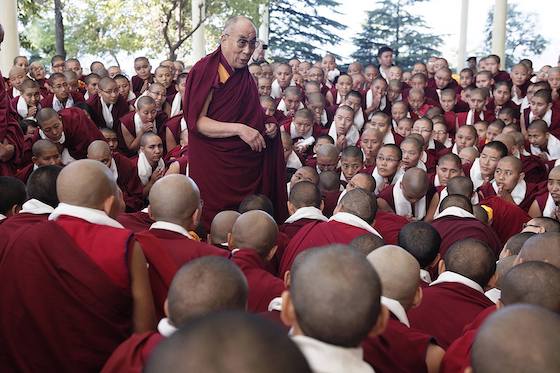
His Holiness the Dalai Lama speaking to Tibetan Buddhist nuns from India and Nepal, after they debated in front of him during the annual inter-nunnery debate in 2013. Photo by Tenzin Choejor/OHHDL
When I first arrived at Dolma Ling Nunnery in 2014, on my first visit there, I heard distant shouts in the night air.
Looking east, I saw lights against the dark sky and assumed it was a soccer game or something similar somewhere just outside the nunnery. Being a curious sort I went to investigate, and to my surprise found not a lively athletic event but 40 to 50 nuns vigorously engaged in debate.
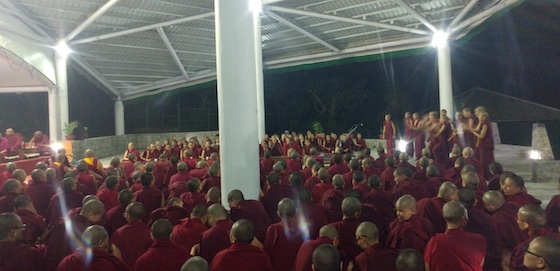
Daily practice in monastic debate is critically important in traditional Tibetan Buddhist learning. Photo of Tibetan Buddhist nuns debating at Dolma Ling Nunnery by Steve Wilhelm.
Outdoors in the fall air, under metal canopies funded by donors from around the world, the nuns energetically debated subtle points about the very nature of reality. In groups of three or four, a standing nun would challenge one sitting in what was obviously brilliant repartee.
Debate practice is a central part of Buddhist practice in this tradition. In this, the nuns study a concept or text in the morning and then debate it later in the day.
A central and vivid quality of what I saw that night, and in many other encounters during this visit and a later one in 2017, was the energy and determination of the nuns.
Many times I’d encounter a nun late at night, studying under the light of an outdoor walking path light. Often they were sitting on the ground and hunched over a text, memorizing or reciting.
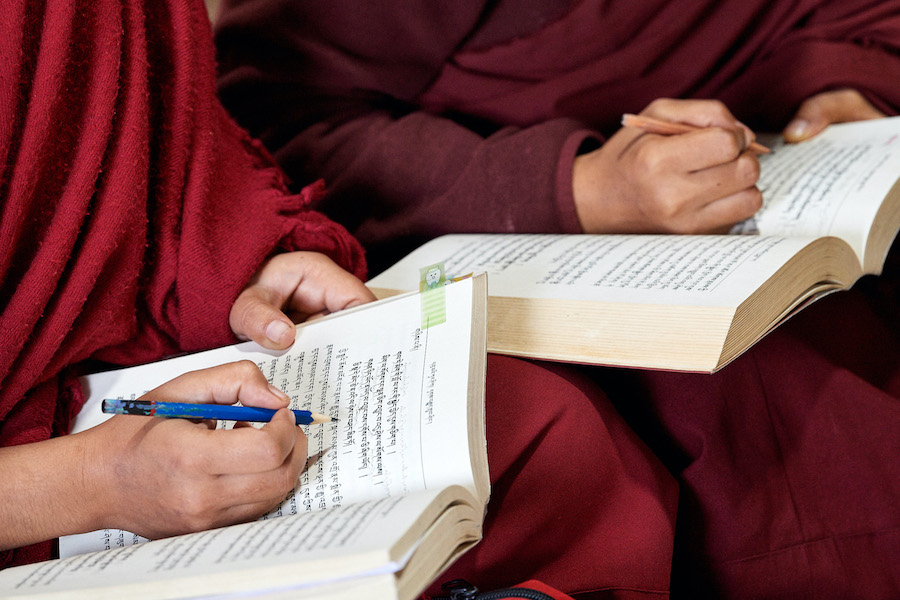
Two Tibetan Buddhist nuns studying together. Photo courtesy of Olivier Adam.
In this way, these nuns were taking advantage of the precious opportunity they have for spiritual growth, which includes growing in the capacity to benefit others.
Investing in the Future of Humanity
It was just this dedication and the potential for these nuns to benefit many beings far into the future, which inspired me to leave a bequest for the Tibetan Nuns Project in my will.
Supporting the future of the Tibetan Nuns Project, and in turn nurturing the future of the nuns that the Tibetan Nuns Project supports, seems one of the best possible investments in the future of humanity.
The world is in a perilous condition here in 2025, with too many national leaders, almost exclusively male, filled with too much hubris around power and strength.
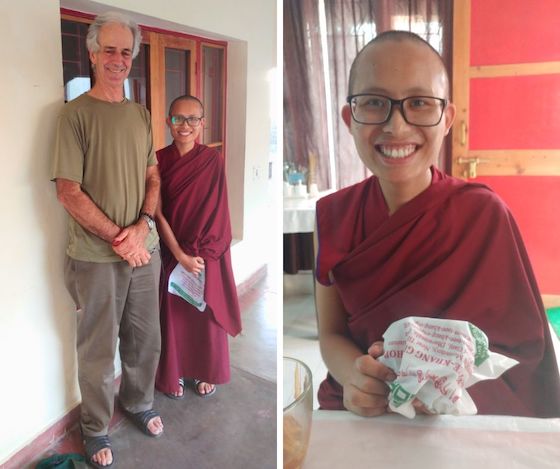
Steve and Dechen, the nun he and his wife Ellen sponsor. “Dechen embodies the nuns’ promise for the future and wants to become a Geshema,” says Steve. Photos by Steve Wilhelm
By comparison, these nuns are deeply dedicated to spiritual practice, to refining themselves in a perfection of ethics, kindness, and wisdom. These are qualities deeply needed in this compromised era. These nuns will set an example, a standard, for generations to come and especially for future young people.
In addition, it simply seems that we need more women in leadership in every aspect of society, to bring more compassion into decisions of global import. The growing number of Buddhist nuns around the world is a key part of that empowerment, and the Tibetan Nuns Project has been a leader in this work.
The Tibetan Nuns Project has supported nuns in their education and their practice, and in their attaining Geshema degrees, the monastic equivalent of a doctorate degree.
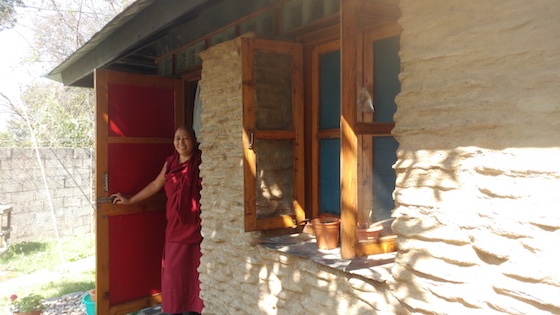
A Geshema nun practicing in a retreat hut at Dolma Ling. The Geshema degree is the highest level of training in the Gelug tradition and was only formally opened to women in 2012. Photo by Steve Wilhelm.
These Geshema degrees put the nuns on an equal footing with the most educated male monastics and empower them to teach other nuns in the future. The difference is a profound transformation, ending 1,200 years of sexist bias in which only male monastics could reach this highest level of accreditation.
Added up, these factors are why my wife Ellen and I have dedicated a portion of our legacy, in my will, to the Tibetan Nuns Project.
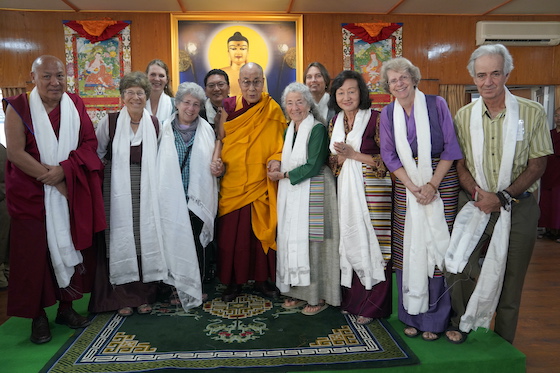
The Tibetan Nuns Project’s 2017 board of directors had an audience with His Holiness the Dalai Lama during the 30th anniversary celebrations. Steve is on the right.
I’ve served on the board of the Tibetan Nuns Project since 2008 because it’s been continually clear just how important this work is. Now adding a donation to the Tibetan Nuns Project as a legacy in my will means that this kindness and generosity will continue long after I am gone.
If you are so moved, please do the same. You can learn more about leaving a legacy to help the nuns here.


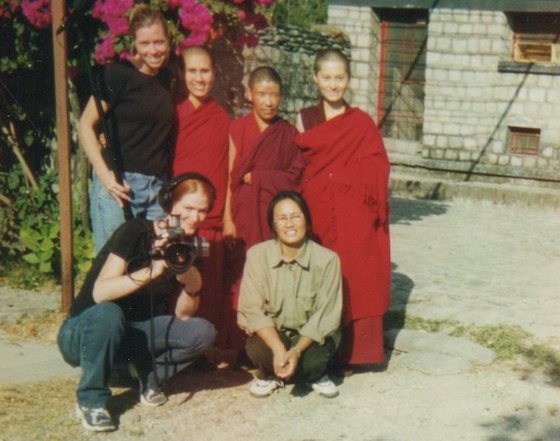
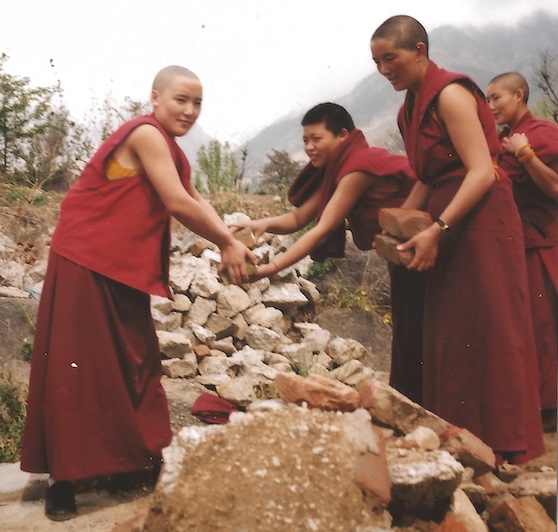
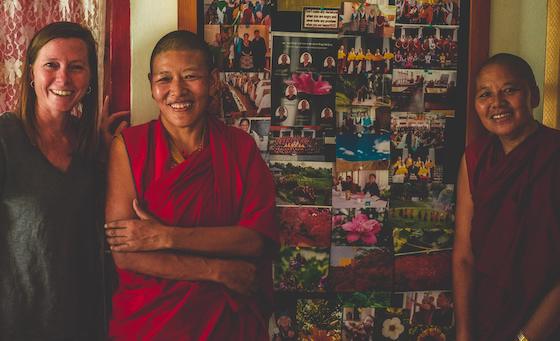
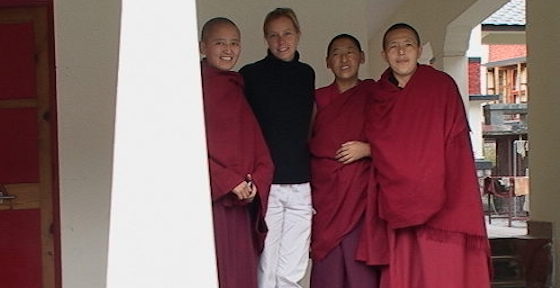
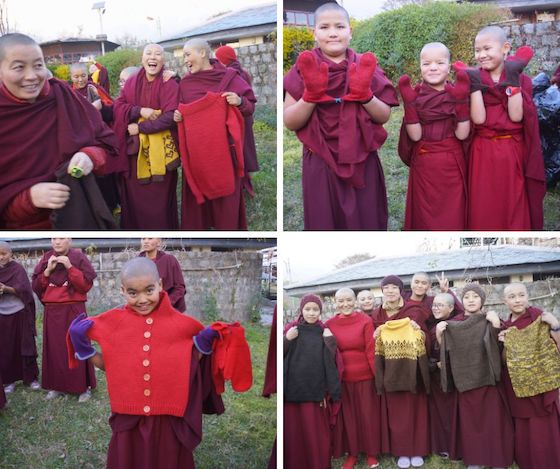
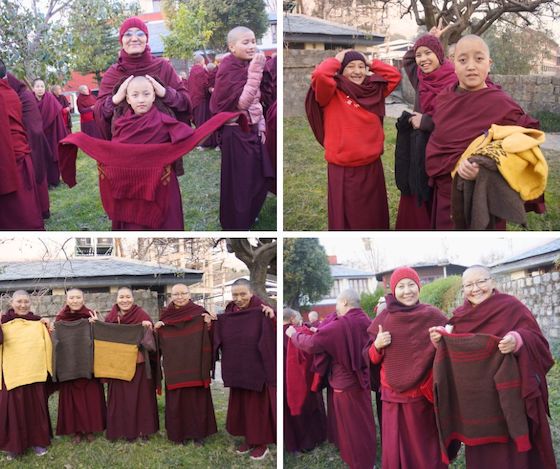
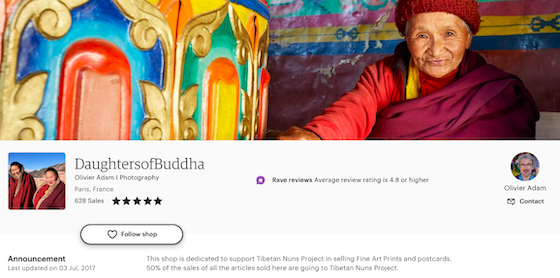
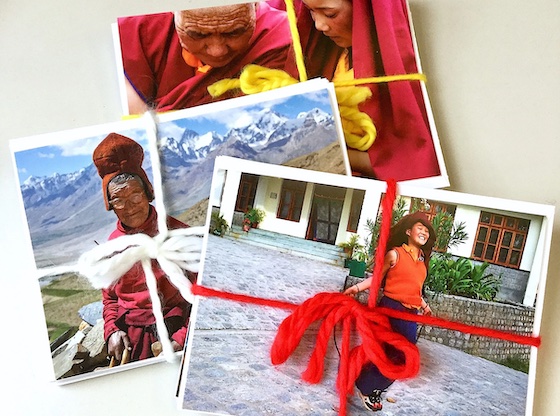


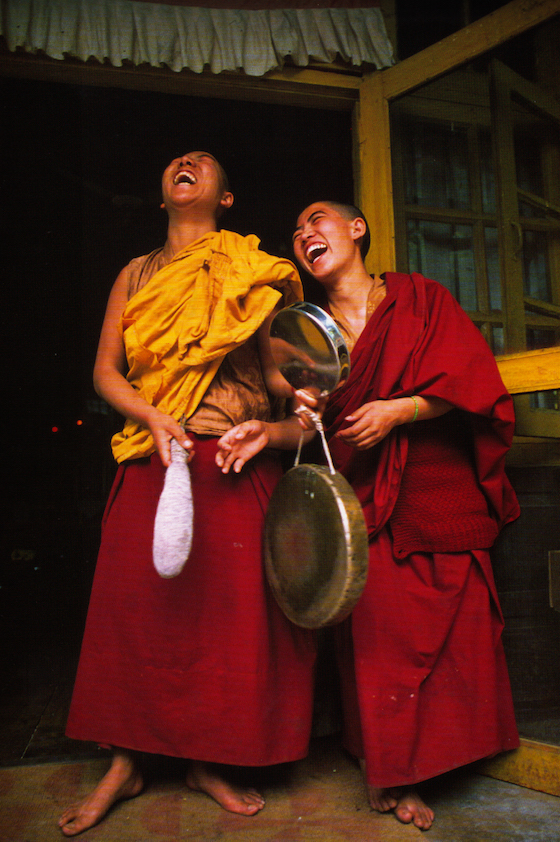 Laughing Nuns: The Story Behind the Photograph
Laughing Nuns: The Story Behind the Photograph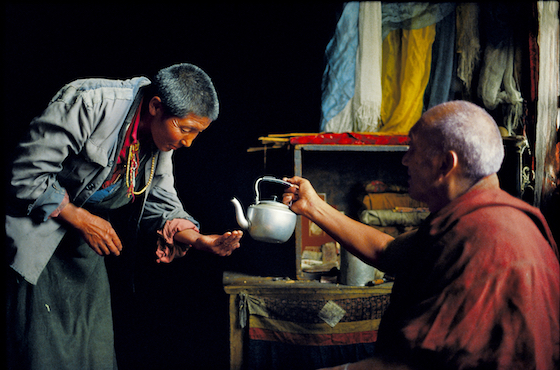 Giving and Receiving
Giving and Receiving